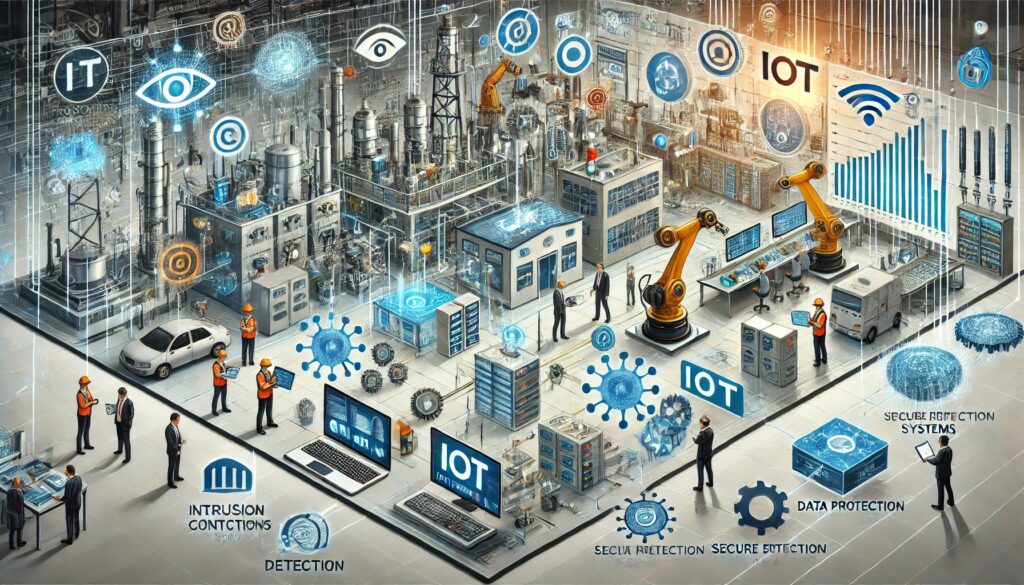The IoT Between the Digital and Physical: Challenges of IIoT Security
That is until the convergence of operational technology (OT) and information technology (IT), driven by the Industrial Internet of Things (IIoT), opened new paths to greater flexibility, efficiency, and connectivity in industrial operations. But it has also brought significant cyber security risks, as the attack surface widens. In this post, we will look at the key aspects that need to be kept in mind while securing industrial IoT systems and their pieces of critical infrastructure.
Protecting Critical Infrastructure: IoT and Industrial Control Systems
Industrial Control Systems (ICS) are the very heart of nearly all critical infrastructure, from energy to water and transportation as well as manufacturing. As these systems are starting to be connected via IoT, they have a whole host of new security concerns.
Unique Challenges of ICS Security
Industrial control systems have a set of security challenges distinct from those faced in traditional IT environments.
- A Legacy component – A number of ICS components were designed years ago, with little-to-no thought to security.
- Business priorities: Availability is highest, followed by safety which are much higher compared to confidentiality and integrity.
- Silent patching: It is common that the critical systems cannot be taken offline to apply updates and patches.
- Industrial protocols often no encryption and authentication, being of proprietary or not by design.
- It May Result in Vandalism or System-Based Accident: Your product might be corrupted via a cyber attack.
Key Threats to Industrial IoT
The largest security risks to industrial IoT environments include these among others:
- UNAUTHORIZED ACCESS via Exploiting ICS Gaining Control of Industrial Systems
- Data exfiltration – Theft of Sensitive operational data or Intellectual Property
- Additionally, acts like Malware, Ransomware: interruption of work, keeping systems hostage
- It involves:
- Man-in-the-middle attacks – interception or manipulation of industrial communications
- DoS: Flooding systems to stop them working
Industrial IoT: A Bridge Across the IT/OT Security Divide
Industrial IoT Security – A Combined Critical Aspects of IT and OT
Here are some key strategies:
1. Asset Tracking and Visibility
Those that you are unaware of, cannot be secured. Even more important is having a complete inventory of all these devices, linking each device to its system and communication path. This includes:
- All IoT sensors, actuators and gateways identified
- Mapping data flow between OT and IT networks
- Firmware versions and patch levels for documentation!
2. Separation of Space and Access control
Apply Segmentation-segment your critical OT systems so they are isolated from IT networks and the public Internetment This can involve:
- IT/OT network DMZs
- Installation of firewalls and Intrusion Detection/Prevention Systems (IDS/IPS)
- Using VLANS to segregate the types of industrial traffic
3. Secure Remote Access
In the era of remote, focus on stronger perimeter protections:
- Enable MFA to the greatest degree possible.
- Require VPN with encryption for remote access
- Monitoring and Logging of All Remote Sessions
4. Data Protection and Encryption
Secure valuable industrial data at rest and in transit,
- Secure IoT device to controller channels with encryption.
- Apply end-to-end encryption to data travels IT/OT communication channels
- Encrypted data storage with permissions
5. Management of Vulnerabilities and Deployments
Establish a sound approach to vulnerability discovery and remediation
- Periodically scan for vulnerabilities in IT and OT systems
- Patch differential will identify based on risk and business impact.
- Apply compensating controls if patching is not immediately feasible
6. Security Alerting and Incident Handling
Industrial IoT Environment Monitoring. Monitor An Industrial YES!
- Implement security information and event management (SIEM) solutions
- Use Outlier Detection to Uncover Abnormal Action
- Create and frequently practice ICS environment-related incident response plans
7. Supply Chain Security
Secure Your Industrial IoT Ecosystem Beyond the Walls of The Factory to Prevent Against Vendors and Partners
- Security assessment of IoT Device manufacturers and services.
- Secure Onboarding of New Devices
- Ensure firmware and software patch integrity
8. Workforce Training and Awareness
The fact is that human error remains a big problem. Educate employees on:
- Knowing How to Avoid Phishing Attacks & Social Engineering
- Secure Operating Practices
- Notifying the appropriate authorities of any questionable behavior or potential security breaches
Conclusion: the Layered Industrial IoT Security Framework
It’s all so much more complicated – and securing industrial machinery requires a strategy that combines cybersecurity with operational technology. Organizations that follow a structured approach to security (people, process and technology) are more equipped to defend their critical infrastructure from increasingly sophisticated threats.
